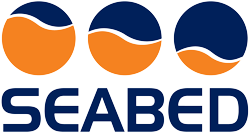 Waterlinked DVL50 – DVL125
Waterlinked DVL50 – DVL125
DOPPLER VELOCITY LOG – OPERATING CONCEPT
The DVL estimates velocity relative to the sea bottom by sending acoustic waves from the four angled transducers and then measures the frequency shift (doppler effect) from the received echo. By combining the measurements of all four transducers and the time between each acoustic pulse, it is possible to very accurately estimate the speed and direction of movement.
1. Sound wave sent
Acoustic narrow beam wave is sent from each of the four transducers.
2. Sound wave echo
The sound wave will bounce off the bottom and the transducers will receive the echo.
3. Measurements performed
The DVL computer measures the received echo and the IMU:
- Doppler measurement. The difference in frequency between transmitted and received signal is the “Doppler effect” which relates a change in frequency to a change in velocity.
- Time of flight. This gives a measurement of the distance between the transducer and the bottom (altitude).
- AHRS/IMU. The onboard Attitude and Heading Reference System (AHRS) / Inertial Measurement Unit (IMU) reads its triaxial gyroscope, accelerometer, and compass sensors to determine orientation.
4. Velocity calculated
Estimated distance travelled, time of flight and AHRS headings are all fed into our Kalman filter which in turn will output the velocity of the DVL.
Download brochure: DVL50 – DVL125
For more information please contact: Sales@seabed.nl



Je moet ingelogd zijn om een reactie te plaatsen.